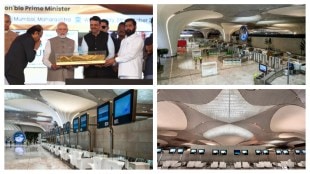Start your day with a decent meal combining proteins, whole grains and healthy fats—that’s advice we get to hear umpteen times from doctors, nutritionists and elders alike. But whether to eat breakfast or not, whether to choose savoury over sweet or the West over East—there are options galore when it comes to the first and most important meal of the day.
There is no doubt that an Indian breakfast, especially regional—whether it is paratha, idli sambar or poha—can never replace an American or English one. In fact, Indian breakfast is considered to be a vibrant mix of flavours, nutrition and traditions, which families have followed or nurtured over the years.
Traditionally, however, breakfast was never part of an Indian meal plan, with its origins dating back to the British era. “The white sahibs had chota and bada hajiri (meals served in households and barracks, particularly in northern British India, shortly after dawn),” says Delhi-based food critic and historian Pushpesh Pant. “After this, the sahibs proceeded for horse-riding sessions or tennis. After two hours followed a second installment— more elaborate and substantial—like a brunch.
The word hajiri means attendance and most likely came into being to mark the presence of serving attendants. The brown sahibs who aped the British followed in their footsteps,” he adds.
“Until the 19th century, most of the Indian population consisted of land-owning farmers with an overwhelming majority being peasants.
Those who lived in the city also had a rural background. Their eating habits functioned on the basis of two meals a day,” says filmmaker, writer and heritage buff Sohail Hashmi. The Hindi phrase, do joon ka khan, aur do waqt ki roti (having food twice a day), is somewhat based on this aspect.
“Farmers living in villages left for the fields early in the morning. The leftover rotis, if any, were hastily gobbled. If it was a poor household, there were hardly any leftovers. Thus, breakfast in India is a recent phenomenon that evolved in urban settlements where people engaged in non-agricultural professions. Traders and shopkeepers had the first meal of the day that could be best described as brunch.
Those who could afford supplemented this with late afternoon snacks like chaat in Delhi,” explains Pant.
In fact, till the mid-1960s, people in towns and cities used to have a cup of tea in the morning and a full meal by 11 am. That is also the time when schools and colleges would have midday breaks. “Similarly, in villages, peasants would wake up and just have chana and water, which were enough to start the day. Around 11 am, they would have a meal, take a break in the afternoon and work for about 2 hours again. The second meal was eaten by sunset,” says Hashmi.
Scientifically, too, the first meal of the day is the most important one, and for good measure. Not only does it kickstart your metabolism and stabilise energy levels, it also provides essential nutrients to the body.
Whether it’s parathas in Punjab, doi-chire-kola-mishti or luchi-tarkari in West Bengal, kanda-poha in Maharashtra and Madhya Pradesh, and idli, dosa, vada in the southern states, which have all the essential nutrients like carbohydrates, fats, iron and fibre to start the day, healthcare professionals have been propagating the many benefits of this essential meal of the day.
As per Bhakti Samanth, chief dietitian, Kokilaben Dhirubhai Ambani Hospital, Mumbai, a Western breakfast, whether it’s cereals and milk or egg toast, is convenient to prepare and is hence popular. “Indian breakfast options like poha, upma, idli, dosa and paratha, on the other hand, are not processed and made fresh. Adding sprouts or crumbled low-fat paneer to upma and poha, more veggies to idli and dosa along with generous amounts of sambar, or simply a bowl of curd with vegetable-stuffed parathas makes these options balanced and healthy meals,” adds Samanth.
A cultural tapestry
India is known for its rich diversity, which reflects on the people’s food habits too. As the day’s first meal, breakfast is not just a routine but also a celebration of the country’s distinct regions and their unique flavours and traditions.
In the north, owing to the extreme climatic conditions and the need for sustenance to face the challenges of the day ahead, breakfasts rich in aromas, tastes and textures are the norm. In UP and Delhi, even parts of Madhya Pradesh and Rajasthan, nothing can beat food items like kachoris, jalebis, dahi/lassi, bedmi puri, aloo sitaphal ki tarkari and khamiri roti. Punjab is known for its chole bhature, kulche and puri sabji, not to forget the piping-hot parathas served with dollops of makhan. In Kashmir, people love to have their nun chai with bread like girda and lavaasa sourced from the local bakery.
“Similarly, coarse grain breads like bajre ki roti constitute a standard meal in Rajasthan. Eaten with mirch ki chutney or gur crushed with ghee, it is quite filling and has essential nutrients like protein, sugar and carbohydrates,” says Hashmi.
Among the Mughlai food items, nihari—a stew consisting of slow-cooked meat like lamb or chicken along with bone marrow—is quite popular as a breakfast dish in places like Lucknow in UP, Delhi and Bhopal in Madhya Pradesh. Another sought-after item is haleem (meat and grain), a traditional Iranian breakfast dish cooked in places like Hyderabad in Telangana and Aurangabad in Maharashtra.
“Nihari and haleem were traditionally made with beef but after the ban, they are now made with buffalo or goat meat. Over six decades ago, the rich men would offer a meal of nihari and serve the poor in the city. It is now a fashionable meal, also served in weddings,” reminisces Hashmi.
“Breakfast is consumed as the first, heavy meal of the day and nihari serves the right purpose of a fulfilling meal,” adds Osama Jalali, a first-generation chef and entrepreneur born in Delhi.
Meanwhile, in the southern parts of the country, the focus is on healthier yet flavourful foods. So you have items made from fermented batters like idli, dosa and vada that are a hallmark of states like Tamil Nadu, Andhra Pradesh and Karnataka.
In Kerala and Tamil Nadu, some of the common breakfast options include idiyappam, also known as string hopper or indiappa, along with puttu— steamed cylinders of ground rice layered with coconut shavings, sometimes with a sweet or savoury filling on the inside. Idiyappam is made of rice flour pressed into noodles, laid into a flat disc-like shape and steamed. Puttu, cooked in steam, is considered to be one of the healthiest dishes to start the day.
The healthy breakfast journey continues as we go towards the eastern parts of India. In Bihar, litti chokha, which was once considered a poor man’s diet, has now become quite popular among the well-heeled too. Litti is made with whole wheat flour and sattu, a roasted gram flour, that is a good source of protein and fibre. In Odisha, sattu is made by dry roasting cashew, almond, millet, barley and chickpea and grinding to a fine flour.
Moving further inwards, specifically across the northeastern states, rice-based items are the breakfasts of choice. In Assam, locals swear by their pithas, chira and hurum (puffed rice). Meghalaya’s Khasi community digs into their red rice varieties with dishes like pu sla, pu maloi and pu doh. Arunachal Pradesh has khura, a pancake made with buckwheat flour, that is had with butter tea made from yak milk.
In West Bengal, milk and murmura with banana, puri and aloo sabji are common options. However, no meal is complete without a sweet dish like sandesh—small-sized sweetmeats made from chhaina and flavoured with nuts, fruits, rose water, chocolate, and vanilla extract.
There is also luchi for breakfast, along with poha churi and doodh chira in Bengal. “Luchi (maida puri) with tarkari (curry of potato juliennes, kalonji and chillies) is a delicacy but it is not easy for working mothers to prepare every day,” says Pujita Moitra, who now lives and works in Canada but remembers her childhood days as a native of Kolkata. Interestingly, Indian breakfast options are not restricted to home-cooked meals but also encompass a vast range of foods available on the streets, especially in thelas and kiosks dotted in every nook and cranny of the country. The list is exhaustive. For instance, in Uttar Pradesh, there is a lane dedicated to only kachoris called Kachori Lane. Other joints famous for the spicy, deep-fried pastry include Netram Sweets and Sulaki Sweets in Allahabad, Bhagat Halwai in Agra and Kota Kachori in Jaipur, Rajasthan, which also has a branch in Bengaluru.
Variants of the snack have also found a place in people’s must-visit lists. Who doesn’t know the popular pyaaj ki kachoris (onion kachoris) of Jodhpur or the mawa kachoris, a sweet variant, at the Rawat Mishthan Bhandar in Jaipur? Similarly, in Delhi, Fateh Chand ki Kachori sells some of the best kachoris in town. The toppings of matar (white peas) with chutneys, spices and fresh coriander make them further irresistible.
In Indore, Madhya Pradesh, Chappan Dukan (56 Shops), a food street of namkeens and sweets, is famous for its ubiquitous poha jalebi for breakfast. Similarly, in Gujarat, tea and snacks like ganthia (flattened rice) with khandvi and thepla are popular. “In Rajasthan, jalebi dipped in milk is a popular option. In most cities, the first thing that opens early in the morning is the jalebiwala, offering what is fondly called as doodh-jalebi,” says Hashmi.
Love for leftovers
In India, leftover food from the previous night is not just a leftover. It can turn into a morning delight, thanks to the several delicious and nutritious twists that Indians are known to offer to such food. If you are from Maharashtra, you would swear by the phodnicha bhaat, a seasoned rice dish that is prepared by using leftover rice. It can be called the Maharashtrian version of lemon rice that is seasoned with mustard and cumin seeds, green chillies and curry leaves.
In fact, leftover rice preparations are a staple in many eastern parts of the country. In West Bengal, it is called panta bhat, prepared by soaking cooked leftover rice in water overnight for fermentation. Its counterparts in Assam, Odisha and Bihar are known as poita bhat, pakhala bhat, and geel bhat, respectively. Meanwhile, many communities in India are known for their love for eggs for breakfast. For instance, Akuri is a popular scrambled egg preparation in Parsi households. Akuri is cooked until almost runny; the eggs are never overcooked.
The main flavouring is fried onions and the spices used are ginger, coriander, chopped chillies, and black pepper. Akuri is traditionally eaten with pav or double roti, and even served with butter toast. “There are also dishes like Papeta Par Eeda or Eedu, which are prepared with eggs and potatoes. It’s a layered dish with potato straws or slices in the bottom and eggs on top. Even eggs baked on top of bhindi, papeta or any such preparation of leftover sabji with tomatoes and potatoes are eaten.
My grandmother also loved her chini-malai toast with a good cup of Parsi chai for breakfast,” says chef-author Anahita Dhondy, who has documented the recipes and memories associated with her beloved dishes in her book, The Parsi Kitchen: A Memoir of Food and Family.









